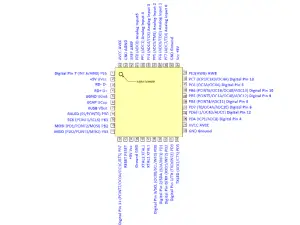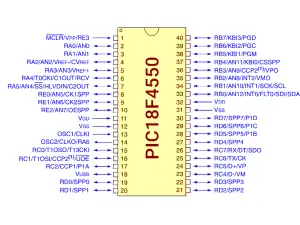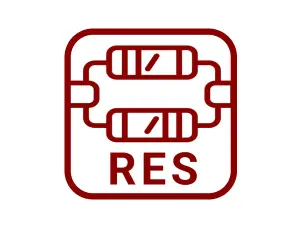During my previous work on the 'Bluefin L-Series Precision Data Acquisition Card' project, ensuring the accuracy of the analog front-end signal conditioning meant spending a significant amount of time selecting appropriate standard resistor pairs for op-amp gains and ADC reference voltages to achieve specific standard resistor value ratios. This process was quite tedious and prone to errors. That experience directly motivated me to develop this efficient resistor divider ratio calculator (which also serves as a powerful resistor ratio calculator), hoping to free myself and fellow engineers from this repetitive task and allow us to focus more on core circuit design.
Calculation Results
The E-Series Resistor Ratio Finder - How-To
Alright fellow EEs and DIYers! So you're tired of squinting at E-series charts or wrestling with spreadsheets just to find two dang resistors that give you the ratio you need? Yeah, me too. That's why I built this little web tool. Let's dive in.
How to Use This Thing (The Gist):
-
Target Ratio Type: This is crucial. Tell the tool how your ratio is defined:
- Voltage Divider: R₂ / (R₁ + R₂): Your classic voltage divider formula. Use this if you're calculating
Vout = Vin * [Target Ratio]. - Direct Ratio: R₂ / R₁: Use this for op-amp gains (e.g., inverting gain magnitude is
Rf/Rin, so R₂ is Rf, R₁ is Rin), or any time you need R₂ to be X times R₁. - Direct Ratio: R₁ / R₂: Same as above, but if you've defined your ratio as R₁ over R₂.
- Voltage Divider: R₂ / (R₁ + R₂): Your classic voltage divider formula. Use this if you're calculating
- Target Ratio Value: Punch in the decimal value of the ratio you're aiming for (e.g.,
0.5,4.7,0.333). -
Select E-Series (multiple allowed): Pick your resistor series.
- E6 (20%), E12 (10%), E24 (5%): Your common, everyday resistors. Cheaper, more available.
- E48 (2%), E96 (1%): For when you need more precision. Selecting E96 will also show you the EIA-96 codes for those sweet 1% SMD resistors in the results!
- Pro-tip: You can check multiple boxes to see options from different series.
- Max. Allowed Error (%): How close do you need to be?
1(for 1%) is a good starting point. Tighter tolerance means fewer results. - Number of Results to Display: Default is 20, but you can ask for more or less.
- Hit "Calculate / Find" and let the resistor gnomes do their work.
Scenario Breakdowns & Examples:
Scenario 1: Classic Voltage Divider (e.g., ADC reference, sensor scaling)
You need to get a specific voltage from a higher one. The formula is Vout = Vin * R₂ / (R₁ + R₂).
Example: You need to get 2.5V from a 5V supply for an ADC reference.
- Target Ratio Type: Select
Voltage Divider: R₂ / (R₁ + R₂) - Target Ratio Value:
2.5V / 5V = 0.5. Enter0.5. - Select E-Series: Let's say you check
E24andE96. - Max. Allowed Error (%): Enter
1. - Click Calculate.
What you might see:
#1 | R₁: 10.0 kΩ | R₁ EIA-96: 01D | R₂: 10.0 kΩ | R₂ EIA-96: 01D | E-Series: E96 | Actual Ratio: 0.50000 | Error (%): 0.000%
#2 | R₁: 10 kΩ | R₁ EIA-96: N/A | R₂: 10 kΩ | R₂ EIA-96: N/A | E-Series: E24 | Actual Ratio: 0.50000 | Error (%): 0.000%
...and other pairs that are close. Notice the EIA-96 codes show up for E96 results!
Scenario 2: Op-Amp Inverting Amplifier Gain
The gain is Av = -Rf / Rin. You're interested in the ratio Rf / Rin.
Example: You need an inverting amplifier with a gain of -4.7. So, you want Rf / Rin = 4.7.
- Target Ratio Type: Select
Direct Ratio: R₂ / R₁(where R₂ will be your Rf, and R₁ will be Rin). - Target Ratio Value: Enter
4.7. - Select E-Series: Try
E96for good precision. - Max. Allowed Error (%):
1or even0.5. - Calculate.
What you might see:
#1 | R₁: 10.0 kΩ | R₁ EIA-96: 01D | R₂: 47.5 kΩ | R₂ EIA-96: 66D | E-Series: E96 | Actual Ratio: 4.7500 | Error (%): 1.064% (if 4.7 was target)
Pro-tip: If you pick R₁ = 1.00 kΩ (01C), you'd look for R₂ ≈ 4.70 kΩ (E96: 65C for 4.64k or 66C for 4.75k).
Scenario 3: Op-Amp Non-Inverting Amplifier Gain
The gain is Av = 1 + (Rf / Rin).
Example: You need a non-inverting gain of 2.
- First, figure out the
Rf / Rinpart:Gain - 1 = Rf / Rin. So,2 - 1 = 1. You needRf / Rin = 1. - Target Ratio Type: Select
Direct Ratio: R₂ / R₁. - Target Ratio Value: Enter
1. - Select E-Series:
E24might be fine. - Calculate.
What you might see:
Any pair where R₁ = R₂, like R₁: 10 kΩ, R₂: 10 kΩ. The error will be 0%.
Scenario 4: Just a General Resistor Ratio
Sometimes you just need two resistors to have a certain relationship.
Example: You need R₂ to be approximately 0.75 times R₁.
- Target Ratio Type: Select
Direct Ratio: R₂ / R₁. - Target Ratio Value: Enter
0.75. - Calculate.
Or, Example: You need R₁ to be 3 times R₂.
- Target Ratio Type: Select
Direct Ratio: R₁ / R₂. - Target Ratio Value: Enter
3. - Calculate.
Pro-Tips & Gotchas from a Fellow Builder:
- Sorting is Key: Click on the column headers (especially "Error (%)") to sort the results. This is usually the first thing you'll want to do.
- EIA-96 Codes: Super handy for SMD work if you select E96. If E96 isn't selected, those columns won't even show up.
- Error Tolerance Realism: Setting error to 0.001% with E12 resistors? Yeah, good luck with that. Be realistic based on the series you choose.
- Component Tolerances: This tool finds ideal standard values. Your actual resistors (1%, 5%, etc.) will have their own manufacturing tolerances. Always factor that into your overall error budget!
- Impedance Levels Matter: This tool purely focuses on the ratio. It'll happily suggest 1Ω and 2Ω, or 1MΩ and 2MΩ. You still need to pick magnitudes appropriate for your circuit's power handling, noise, loading, etc.
-
No Results? If you get the "No results found" message, try:
- Increasing the "Max. Allowed Error (%)".
- Selecting more E-Series (especially higher-density ones like E48 or E96).
- Double-checking your "Target Ratio Value".
Got Feedback or a Bug?
This thing was built out of necessity. If you find something quirky, a bug, or have a genius idea for a feature, let me know! We're all in this pile of parts together.
Happy building!













